over 200 years of Springfield’s Parks


over 200 years of Springfield’s Parks

One of our most pivotal responsibilities as public servants is the care and protection of our open spaces. These resources cannot be replicated or easily replaced. Our parks and natural resources will exist well past the generations of municipal managers who act as custodians of public land. It is imperative that we protect and preserve these natural assets and not take them for granted. We hold the highest regard for the precious gifts of land bestowed on our city more than 130 years ago, with some parcels dating as far back as 1636 when the city was founded. We are very fortunate that we had prescient forefathers who laid the foundation for our magnificent park system.
The creation of the first Springfield Park Commission dates back to as early as 1880. The Park Commission’s initial goal was very simple: to provide a reprieve from the industrial age that was booming across the country and to give residents a respite from the hustle and bustle of everyday life. The Commission knew the public needed open space to enjoy and recreate and realized that if they did not set aside land for these purposes quickly, it would be taken over for more housing and factories. I am in awe when I reflect on the foresight these individuals exhibited to donate significant parcels of land, assist to purchase land, and encourage others to donate property to develop a first-class park system. The city now has parks in every one of our 17 neighborhoods and we have idyllic ponds and streams that meander through open spaces, eventually depositing into the Connecticut River.
I’m very honored and humbled the citizens of Springfield have had the confidence in me to serve as Mayor over the past fifteen years – the longest

serving mayor in the city’s history. I would be remiss if I did not share that our public parks and open spaces will always hold a special place in my heart. As the son of immigrants from Italy, Forest Park was my family’s Riviera. My parents, Al and Clara, and grandparents sought to build their family home and business in the heart of the Forest Park neighborhood, which gave my bother Alfonso, my sister Joanne, and I the opportunity to explore and enjoy the 735 acres of Forest Park daily. It was where I would learn to harvest mushrooms with my grandparents, play sports, and enjoy the refreshing pool or seek shade under the trees on warm summer days.
I love Forest Park so much that my wife Carla and I decided to reside and raise our two daughters, Cassandra and Chiara, just blocks from where I grew up. Now they too share my fondness of this Crown Jewel of Springfield. That’s what makes Springfield so unique — everyone has a neighborhood park and has precious memories of their best-loved park.
As we celebrate this anniversary of our parks, I want to recognize Executive Director of Parks, Buildings, and Recreation Management Patrick Sullivan who has been invaluable and instrumental in the care and renovation of our municipal parks. I am proud that he has been a key member of my administration. I would like to thank Joe Carvalho and Wayne Phaneuf of The Republican for wanting to celebrate our parks and open spaces. I appreciate their countless hours of research in the development of this history and am pleased that this book will rekindle many cherished memories from readers with recollections of their favorite parks.

“Parks, in their purest form, are an attempt to restore what once was. They are a democratic ground, where nature can thrive unspoiled, and humans only interfere to preserve nature’s beauty.”
- Frederick Law Olmsted.The City of Springfield is truly fortunate that in the 1880s there was a consensus decision made to create a municipal park system. By the 1920s, thousands of acres were already set aside for parks and open space and protected from development. Now every neighborhood has a park, including the crown jewel of them all — Forest Park. Practically everyone who has lived in Springfield has experienced the majesty of Forest Park. Patrons reveled in family picnics; a reunion of friends; their best baseball game; skating once on Porter Lake and now at Cyr Arena; visiting the current Zoo
in Forest Park or the former zoo which was the home of Snowball, Morganetta, and the iconic Monkey House; enjoying the splendor of Bright Nights; cooling off at the swimming pool and splash pad; and traversing the many woodland trails.
The memories made here and at all of our parks are something that is not taken lightly by our dedicated park workers as they dutifully perform their responsibilities to provide a safe and enjoyable experience for our park visitors. In reviewing the archives, it is clear that the park founders, the many devoted workers over the years, the Park Commissioners, the mayors and city councilors, and the residents have all contributed to the exemplary park system we have today as we celebrate the 140th anniversary of the Springfield Park Department and over 200 years of public parks in Springfield.
All of the Park Commissioners that have served have done so with honor and dignity. Since the first commission, they have taken on the role of protector and contributor to our neighborhood parks and open spaces. I would like to mention two individuals who served as Park Commissioners during my tenure who played a key role in rejuvenating Forest Park. In the mid- 1980s, Forest Park had become a haven for miscreants. Individuals were drinking and blaring boom boxes, cars were being worked on along the roads, people were speeding throughout the park, and so forth. Overall, it was becoming an intimidating atmosphere as opposed to the family friendly venue we strive to maintain.

Park Commissioner Joseph Deliso assigned me to do a study on initiating a fee system to enter Forest Park. After view-
ing my report, Commissioner Deliso decided that a fee system was the way to proceed but was having difficulty convincing the other commissioners that this was appropriate. Consequently, the report was shelved for three years. When Bill Putnam was appointed Park Chairman, Mr. Deliso briefed him on the issue, Chairman Putnam met with me, and then decided that the fee system should be implemented. Although there was initial resistance by a few residents, the new fee system yielded positive results on its first day of implementation. As Bill Putnam and I stood at the front gate to monitor the activity, we witnessed those we recognized as troublemakers turning around and they no longer frequented the park. From that day forward, Forest Park again became the tranquil, safe habitat desired by all. Bill Putnam had the fortitude to act on








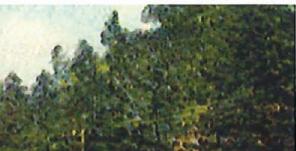

The Friends of Springfield Parks is a 501(c ) 3 nonprofit organization which raises funds to support Park Department projects. Currently the Friends are seeking donations and funding for the creation of the planned Forest Park Horticulture and Learning Center. The project goal is “to re-establish the Forest Park Horticulture Area by creating an opportunity for exploration of the natural environment, history, and the arts for all the patrons that visit Forest Park.”
If you would like more information please contact the Springfield Park Department, 200 Trafton Rd., Springfield, MA 01108• 413-787-6440.
an idea that was unpopular with some folks but which was the proper tactic for Forest Park.
I am grateful to then Mayor Richard E. Neal for seeing something in me as a new graduate from UMass and Stockbridge School of Agriculture to hire me as a Park Planner for the Springfield Parks Department. His words to me at the time were, “Our parks have great potential, go up there, be creative and bring them up to their potential.” These words have stayed with me throughout my 36 years with the department. I am fortunate that everyone who preceded me, served with me, and now new hires coming in have had a passion for their role and stewardship for this public land. All of our open spaces are vulnerable to Mother Nature’s whims, but somehow our dedicated park staff have always been responsive and innovative to get the job done in a diligent and efficient manner. It is the passion of the park employees that is the key ingredient in making our park system special.
Since I started as Park Planner in 1987, the city has not missed a grant round in what is now known as the Commonwealth’s PARC grant program. We had a decrease in federal funds after the Reagan Administration, but funds would be once again restored, with the assistance of Congressman Neal, under the Bush Administration. Our city parks would not be as commendable as they are today without state and federal grant programs. In addition, our state delegation over the years deserves credit in ensuring our many projects are
funded annually.
Three years ago voters, showing their support of public parks, passed the Community Preservation Act (CPA) which guarantees a portion of the local real estate tax revenue be used for the purpose of restoring our parks. This has been a key component in funding projects that do not fit the criteria of state or federal grants. As of today, over 5 million dollars have been invested into our parks from CPA funding. Passing the CPA was a clear message that our residents appreciate their open space and that they desire to see funding allocated to the city’s municipal parks.
Our neighborhood councils play a key role in assisting Springfield Parks with selecting CPA projects and developing scope of services for the projects they believe are necessary in their neighborhood.
It is rewarding to have key stakeholders in every neighborhood who share that same passion for open space that was exhibited by our forefathers in the latter part of the nineteenth century. Our park benefactors would be very proud of the role our neighborhood councils and civic associations play by participating in our park projects. City bonds have also been a key component to supplement funding of many projects.
Past Mayors and City Councilors have always been supportive in releasing local funding to ensure our parks can be enjoyed by all of our residents.
Our parks are forever changing — they are susceptible to the environment, storms, and now climate change. Over the past ten years our parks have benefited from a
monumental investment into restoration projects. I have had two bookends of enthusiastic supporters in my tenure in park management: former mayor and now Congressman Richard Neal at the beginning of my career and current Mayor Domenic Sarno. During Mayor Sarno’s first week in office, he met with me and detailed his goals and his particular interest in our parks. He passionately described how he grew up near Forest Park and how, later in life, he had managed the South End Community Center. The combination of open space and active recreation were vitally important in his view. He wanted every neighborhood to have its own park.
With 93 million dollars invested into our parks, we are nearing Mayor Sarno’s dream for every park being renovated. His ability to connect effectively with state government was evident under both Governor Deval Patrick and Governor Charlie Baker. The city has suffered through significant weather events, especially during the Baker administration, and the Mayor and Governor Baker would immediately secure emergency funding to begin relief efforts. All of the mayors I have worked for fully supported our parks and open space, but Congressman Neal and Mayor Sarno exhibited a passion for open space that exceeded all expectations. I would be remiss if I did not acknowledge the contributions of Sherriff Mike Ashe and Sheriff Nick Cocchi. I met with Sherriff Ashe some 28 years ago and we discussed the idea of bringing his innovative work-release program to our park system. What
started off as a fledgling program with two crews has now grown to ten daily work crews assigned to park districts. Their role in assisting our park staff has been instrumental in maintaining our parks to a high standard for the enjoyment of park patrons. Under the leadership of Sheriff Cocchi, the program has been expanded to include safety patrols in the parks and specialty programs such as stump removal, forestry trail maintenance, and carpentry. This successful partnership has had a significant impact on our parks and programs, and has been beneficial to the Sheriff’s workers as they learn skills that ready them for employment as they re-enter society. We are very grateful to the Hampden County Sheriff’s Department for their commitment to Springfield parks.
I am pleased to announce that the future is very bright for our park system. There are plans for a new Horticultural Center; Greenleaf Park is scheduled to receive a $1.5 million renovation; Duggan Park will be transformed with $14 million of upgrades; Donna Blake Park is under design for a makeover; our Forestry Division will be opening new headquarters at their renovated tree nursery; improvements to Blunt Park, Hubbard Park, Marshall Roy Park, Kenefick Park, Hennessey Park, Nahorniak Park, Angelina Park, Calhoun Park, Barrows Park, Loon Pond, and Westminster Park have been completed recently or are scheduled for work. I am proud that both the Van Horn Dam in the North End and the Wa-
tershops Pond Dam in the South End have undergone major repairs so that area residents and businesses are protected from the potential of a natural disaster. We believe we have chosen our projects wisely to ensure a viable and safe park system. Over the years, it has taken many hands to ensure that our park system is praiseworthy. I hope this brief acknowledgement gives insight into the management and operation of our park system that is necessary to ensure that we properly preserve our renowned parks and open space. We consider it a great honor and responsibility to be stewards of this land and we are grateful to everyone that has participated in making our parks prominent. Please know that today the idea of a parks system only dreamed of in 1880 is thriving in the City of Springfield. I am confident that past and present efforts will lead to a bright future for our parks to be enjoyed by many succeeding generations.
Patrick Sullivan Executive Director of Parks, Building and Recreational Management
In2021 Springfield’s Parks Department marked its 200th anniversary that began with the acquisition of Court Square in 1821 and continues to add to its hundreds of acres of land and water for public use.
Court Square was sold to the then town of Springfield for $3,000 with the provision that “it never be encumbered with buildings or appropriated for other use other than public common.” This first open space was the beginning of an exemplary parks system that thrives to this day.

Springfield is a city of parks. There is the crown jewel of Forest Park with its hundreds of acres, baseball diamonds, lakes and ponds, a zoo, ice arena, renown festival of lights at Christmas time, the Environmental Center for Our Schools, miles of trails and picnic spots, beautiful gardens and the Barney Carriage House and much more. It is truly one of the oldest (1884) and best parks in America.
During the Civil War a log cabin was constructed on Court Square in 1862 to serve as a City Recruiting
Office. A monument to those who died in the war is at the square along with Miles Morgan’s Statue, a hero of King Philip’s War (1675), U.S. President William McKinley and monuments to the veterans of the Korean and Vietnam wars.
Presidents Teddy Roosevelt, John F. Kennedy, and Bill Clinton used Court Square for Springfield rallies. For 200 years, this park has been the stage for orchestras, a renown annual Jazz Festival in addition to several protests and public discourses.
The Springfield Parks Department also oversees dozens of other parks and playgrounds throughout the city, along with lakes and pools for swimming, two golf courses and countless terraces and pocket parks. We can thank the forefathers and mothers who stepped up two centuries ago to lay the foundation of one of the greatest park systems in America. We hope you enjoy this book and visit many of the parks that make our city unique.
ABOVE: COURT SQUARE CA. 1900. REPUBLICAN PHOTO ARCHIVES.




LEFT: THOUSANDS JAMMED COURT SQUARE DURING SEN. JOHN F. KENNEDY’S VISIT TO THE CITY BEFORE THE 1960 NATIONAL ELECTION. REPUBLICAN FILE PHOTO.

RIGHT: FOUNTAIN LOCATED IN COURT SQUARE DONATED BY SMITH & WESSON COFOUNDER DANIEL BAIRD


Springfield is a city of parks. There is the crown jewel of Forest Park with its hundreds of acres, baseball diamonds, lakes and ponds, a zoo, ice arena, renown festival of lights at Christmas time, the Environmental Center for Our Schools, miles of trails and picnic spots, beautiful gardens and the Barney Carriage House and much more. It is truly one of the oldest (1884) and best parks in America.
The Springfield Parks Department also oversees dozens of other parks and playgrounds throughout the city, along with lakes and pools for swimming,






two golf courses and countless terraces and pocket parks.
But how did this park system get its start? You have to go back to 1637, just a year after Springfield was founded. What is now Court Square was the site of the first meeting house. This land became the first “common” property, belonging to the people. That made it the first “park” and became the heart of the community.
Although this was not officially a town common which were used in other Massachusetts Bay Colony settlements as a place to graze livestock or trade and sell goods.


the Springfield Parks
and


forward to another 200 years of partnership!


From afterschool recreational programs to our senior centers, including the building of the Raymond A. Jordan Center; our partnership has been invaluable and has had a positive impact on the quality of life for the residents in the City of Springfield. 311 State Street, Springfield, MA 01105



As the city’s park system celebrates over 200 years, we congratulate
look
It wasn’t until April 8, 1821 when five prominent Springfield citizens, “realizing the need for an open square or yard near the Hampden County courthouse, bought of Elizabeth Sheldon, . . . one acre of land, more or less...” for $3000, which was termed a “great expense.” Mrs. Sheldon was the widow of Charles Sheldon and the daughter of Zenas Parsons, the original owner of the old tavern that
had stood near the center of town for several decades. A provision of the sale was that the land was “...never to be alienated or encumbered with buildings or appropriated for other use than a public common, except such trees for shade and ornament...” Soon labeled as “Court Square,” this was the first public, open space in Springfield and the beginning of a remarkable system of parks.

Many small towns still only have their village commons as the “peoples’ land” but as Springfield grew, that first park spawned more than 100 little and big parks.
LEFT: CIVIL RIGHTS PROTESTERS STANDING BEFORE THE SPEAKERS’ PLATFORM AT COURT SQUARE. VIRTUALLY ALL HAD PARTICIPATED IN THE MARCH DOWN STATE ST. TO THE SQUARE. AUG. 22, 1965.

Soon labeled as “Court Square,” this was the first public, open space in Springfield and the beginning of a remarkable system of parks.TOP LEFT: UNION ARMY RECRUITING OFFICE IN COURT SQUARE, SPRINGFIELD, MA., 1862. REPUBLICAN FILE PHOTO. REPUBLICAN FILE PHOTO.

ADDITIONAL SPONSORS:
The Everett Barney Trust, Friends of Springfield Parks, The Walker Trust Fund






In 2021 Springfield’s Parks Department marked its 200th anniversary that began with the acquisition of Court Square in 1821 and continues to add to its hundreds of acres of land and water for public use. Court Square was sold to the then town of Springfield for $3,000 with the provision that “it never be encumbered with buildings or appropriated for other use other than public common.” This first open space was the beginning of an exemplary parks system that thrives to this day. Springfield is a city of parks. There is the crown jewel of Forest Park with its hundreds of acres, baseball diamonds, lakes and ponds, a zoo, ice arena, renown festival of lights at Christmas time, the Environmental Center for Our Schools, miles of trails and picnic spots, beautiful gardens and the Barney Carriage House and much more. It is truly one of the oldest (1884) and best parks in America. The Springfield Parks Department also oversees dozens of other parks and playgrounds throughout the city, along with lakes and pools for swimming, two golf courses and countless terraces and pocket parks. We can thank the forefathers and mothers who stepped up two centuries ago to lay the foundation of one of the greatest park systems in America. Proceeds from each book sale will be donated to the Horticulture Learning Center Project planned for Forest Park.









Universal Electric has 28 years of experience in providing turn-key electrical construction of projects valued below $10,000 to $20,000,000, in different industries: healthcare, government, education, science labs, agriculture, manufacturing, utilities, residential, industrial, and more.


www.uecma.com







79 Wayside Avenue
West Springfield, MA
413-788-9473
413-788-0874 fax
Whileit’s fair to say there’s an “Olmstedian” aspect to the Forest Park landscape, credit for the crown jewel of Springfield’s park system necessarily goes to another man – a man largely forgotten by history. His name is Justin Sackett.


Sackett – at the behest of city authorities, but without any written plan – began in the mid-1880s to selectively drain marshes, channelize streams, and build the carriage roads, pavilions, ponds and grounds that formed the core of Forest Park, even as additional land parcels were donated. Forest Park was the culmination of Sackett’s long and varied career.
His previous projects include Springfield’s Court Square, Oak Grove Cemetery, Calhoun Park, the racetracks and dike at the former Hampden Park, the grounds of Northampton State Hospital, as well as Springfield Hospital. For nearly a decade, he was Springfield’s superintendent of streets, charged with constructing both streets and sewer lines. Privately, he owned real estate and built houses.
Born in Westfield in 1814, Sackett as a boy hired himself out to a local farmer before going to work at the “new” Springfield Cemetery in 1840. His first executive position was in St. Johnsbury, VT, where he laid out a new town cemetery, gaining experience and skills for larger contracts later in Springfield.
An 1891 article in the New York-based journal Garden and Forest identifies Sackett as a “local landscape-gardener,” who, “without any definite plan,” proceeded





to develop Forest Park with a “happy-go-lucky piecemeal method” that, despite limited municipal funding, “proved much more satisfactory and pleasing than might have been expected from an unstudied scheme.”
It may be more accurate to characterize Sackett’s work as an inspired synthesis of disparate land parcels, donated over time. Somehow, Orick Greenleaf’s 70-acre gift of pristine woods, wild ravines and trickling streams had to be integrated with Everett Barney’s manicured estate – 175 acres including gardens, lawns, exotic plants and lily ponds (which may have been installed by Sackett in previous, private work for Barney).
Sackett’s obituary in the Springfield Republican (March 4, 1897) summarizes his career and says this about his role in Forest Park: “His idea in regard to the planning and development of Forest Park was to run a narrow cultivated strip through the park, leaving it in close juxtaposition to the wilder and rougher parts …” Sackett died peacefully, age 83, at his Spring Street residence. He was eulogized as having lived “a life devoted in the most part to the development of the beautiful …”


Along the Pecousic Brook from Porter Lake to the Connecticut River, and in other parts of our vast and versatile park, Sackett’s design legacy continues to serve the public for which it is held in trust.
Justin Sackett was Springfield’s own Frederick Law Olmsted.
Editor’s note: The Springfield Parks commissioned Frederick Law Olmstead, Jr. to provide park designs in 1914 and again in 1923.
Universal Electric Co. offers complete electrical contracting services from remodeling, construction, commercial or industrial.







The Walker Trust Fund was established in 1920 by brothers Edward M. Walker (18461905) and William Brigham Walker (1848-1911) in memory of their father Timothy Metcalf Walker (1815-1904). Among the many achievements of T.M. Walker is his company’s completion of a $400,000 contract in excavating from the western portal of the Hoosac Tunnel to North Adams and the building of a wing dam below Windsor Locks on the Connecticut River. The Walkers were very successful businessmen who owned and developed significant downtown Springfield properties including the Walker Block. One of the early uses of the Fund was to create the Walker Grandstand at Forest Park. It was dedicated on Sept. 11, 1949. The stand replaced one that burned in 1940 and could not be replaced at the time because of wartime restrictions on building materials. The Springfield Park Commission votes expenditures from the Fund according to the purpose of the Walker Trust as stated: “for extension and development of Forest Park by the Park Commissioners.”










Thebrilliant and very eccentric inventor/ businessman/ philanthropist, Everett H. Barney was one of Springfield’s most respected and celebrated citizens. His Barney & Berry Manufacturing plant located in the South End was world famous for its quality adjustable skates. Those skates were commonly used by skaters on Porter Lake each winter. The design
of garden landscapes, mansion architecture, and Barney’s striking mausoleum were unusual for New England and reflected his life-long proclivity of taking a non-traditional path. His eccentric touches evident in the buildings, statuary and landscape influenced Ted Geisel and elements of Barney’s unusual estate appear in his drawings.








MIDDLE:












































































1. Landscapers working at the Barney Estate property, ca. 1890s. Photo courtesy the Lyman and Merrie Wood Museum of Springfield History, Springfield Museums. 2. Everett Barney standing atop of the “old Clay mound” glacial deposit used by Native Americans for clay pots, and later by a brick yard. Photo from Park Dept. Annual Report of 1898. 3. The “Omiskanoagwiak” statue at Forest Park by Peter Toth was installed and dedicated in 1984. A Native American ceremony was performed at the event to commemorate the monument dedicated to the “Pioneer Valley Indians” which encompassed the numerous associated Algonquian clans such as the Agawams, Woronokes, Pocumtucks, and many others. Photo by John Suchocki/The Republican 4. The Wood Museum’s 1899 Knox, only the third car made by the Springfield-based company, was owned by Everett Barney, who later donated his estate to the city of Springfield for the creation of Forest Park. Photo courtesy the Lyman & Merrie Wood Museum of Springfield History, Springfield Museums. 5. Postcard of the steps up to the Laurel Hill statues of the Three Graces, ca. 1900. Private collection. 6. Completed Barney Mausoleum. Photo courtesy of the Lyman and Merrie Wood Museum of Springfield History, Springfield Museums. 7. Rustic Pavilion and fountain/pool. Photo courtesy of the Lyman and Merrie Wood Museum of Springfield History, Springfield Museums. 8. Exterior of the renovated Barney Carriage House, May 11, 1998. Photo by Michael S. Gordon/The Republican 9. Children enjoying a winter woodland hike through Forest Park. Photo courtesy of the Lyman and Merrie Wood Museum of Springfield History, Springfield Museums. 10. Pamela Dunn of Rockland, and her 2-year-old niece, Deirdre Finn of Springfield, on a paddleboat at Forest Park’s Porter Lake, April 19, 1988. Republican file photo). 11. Top: Postcard of Porter Lake at Forest Park. In 1919 a stone dam was constructed across Pecousic Brook and approximately 35 acres of meadowland, cattail swamps and ravines were flooded over. To defray the cost of this new beautification project, Sherman D. Porter bequeathed $10,000 and the new body of water appropriately bore his name. Postcard in Private Collection. Bottom: Nature Trail along Pecousic brook, ca. 1930. Postcard courtesy of the Lyman and Merrie Wood Museum of Springfield History, Springfield Museums. 12. John Collymore, 5, of Springfield, prepares to throw in his line during a free fishing derby at Forest Park, 2019. Photo by Frederick Gore/The Republican 13. The 1916 Garden of Remembrance in the Rose Garden of Forest Park. Courtesy of Masslive. 14. Kevin Welz, upper right, his daughter, Caitlin Welz, left, and son Brendon Welz, kneeling right, and his grandchildren, Lily Slater, 1 1/2 and Olivia Graves, 8, both seated on the new stone dog that Kevin Welz helped secure for Forest Park. Sept. 19, 2013 by Michael S. Gordon/The Republican 15. Bright Nights lighting display depicting the Everett Barney Mansion, 2017. Photo by Chris Marion/The Republican 16. Dr. Seuss in 1937 sculpting turtle-necked sea-turtle. The hawksbill sea turtle shell came from his dad who, as superintendent of Springfield’s parks, also oversaw the city’s zoo animals. There are 17 known sculptures in the Seuss system of “northodox taxidermy.” 17. “The most celebrated resident” of the Forest Park zoo was Morganetta, a one-year-old Indian elephant had a special building constructed for her occupancy after her arrival in 1965. Photo my Michael S. Gordon/The Republican 18. Entrance to the Zoo and Education Center in Forest Park, 2021.Photo by Hoang ‘Leon’ Nguyen / The Republican 19. New Forestry operations Center building at Forest Park, April 21,2023. Photo by Joseph Carvalho III/ The Republican 20. Springfield City Forester Alex Sherman tending to seedlings in the Forestry Department’s greenhouse in Forest Park, April 10, 2023. Photo by Don Treeger The Republican


Everett Hosmer Barney was born on December 7, 1835, in Saxonville, a northerly section of Framingham. In 1864 he moved to Springfield and formed a partnership with John Berry, to manufacture skate blades that were readily attachable to various sizes of normal footwear. The Civil War years were a heady era for American business and his patent, granted in 1869, assured his financial success. The firm of Barney & Berry was located in the South End of Springfield, between today’s Basketball Hall of Fame and the old Hampden County jail. The
business prospered and after a few years Berry sold out to Barney who continued the management of the enterprise until his death.
Popularly regarded as the most important person in the development of Springfield’s park system, Barney was surely its most catalytic and long-lasting figure. Exactly who, or what, inspired Barney to this generosity is lost in the murk of conjecture, but it was dramatically effective. In a series of additional donations of land, and ultimately in the disposition of his residual estate, he provided an example that stimulated numerous other
leading citizens to a similar generosity.
Barney began purchasing the lots that would eventually make up the entirety of his estate in 1871. Through purchases of eight adjacent parcels of land from 1871 to 1884, Barney finally assembled the property he required to plan and develop his remarkable estate which would one day become a large portion of Forest Park.

Barney laid out the landscape of his estate in 1884, and in the summer of 1885 built his mansion which at that time was perhaps the most expensive private resi-
dence in Springfield.
For the sum of one dollar, on May 15, 1890, Barney and his wife, Elisa, sold one hundred nine and a half acres, presently containing the Barney Hill and Duck Pond areas, to the City of Springfield. The deed contained some restrictions -his right to lifetime occupancy of his residence, burial of himself, his wife and their only son, George, in a granite mausoleum he had built for the purpose, and a requirement that certain adjacent property also be acquired. Within three months, on 8 August of the same year, the heirs of Linus Dickinson deeded to
the City most of their remaining adjacent farmland (for a total Dickinson acquisition of 116.66 acres) thus meeting Barney’s prime condition for acceptance. One after another, all his other conditions were met, and after two years the only remaining restriction was that the property thus transferred be “...forever devoted to park purposes under the public park acts of the Commonwealth.”
In keeping with the spirit of the gift and the times, Barney was soon appointed to the Board of Park Commissioners in 1890, a position he retained for the rest of his life. In this
ABOVE: THE WOOD MUSEUM’S 1899 KNOX, ONLY THE THIRD CAR MADE BY THE SPRINGFIELD-BASED COMPANY, WAS OWNED BY EVERETT BARNEY, WHO LATER DONATED HIS ESTATE TO THE CITY OF SPRINGFIELD FOR THE CREATION OF FOREST PARK. PHOTO COURTESY THE LYMAN & MERRIE WOOD MUSEUM OF SPRINGFIELD HISTORY, SPRINGFIELD MUSEUMS.man.
their remainfarmland (for a acquisition thus meeting condition for after anothconditions after two years remaining restriction property thus “...forever depurposes under acts of the Commonwealth.” the spirit of times, Barney appointed to the Commissioners position he retained life. In this



office Barney participated actively in further acquisitions of land for the expansion of Forest Park with the help of his fellow commissioners. Typical of these transactions -- all designed to fill out the park to its optimum natural boundaries -- was his 1908 decision, with fellow commissioners Herman Bucholz, Nathan Bill, Daniel Marsh and William Wright, to acquire a long strip of land south of the Pecousic Brook between the New Haven Railroad and the Connecticut River, for the grand sum of ten dollars.
Leaping ahead of time in this chronology, Everett Barney, who died in 1916, left an estate that was valued at almost half a million dollars, not including a variety of holdings of indeterminate value, such as some extensive acreage near Tampa, which he cautioned his trustees not to part with for fifty years, as he felt it would ultimately form the most valuable part of his estate.”
Seventy-five years after his death, the estate of Everett Barney, managed after 1975 by the Trust Department of BayBank Valley, produced an income of $150,000 annually that was used



“... when called upon by the Park Commissioners to the City of Springfield... to maintain, improve and beautify so much of Forest Park as is described as follows... [here Barney defined the totality -178 acres -- of his several gifts to the City].”
Before the Civil War broke out Barney was working in Connecticut making Spencer repeating rifles. His next job was as a foreman in New York when the draft riot broke out and he had to secure the weapons from the rioters. Thankfully, for the City of Springfield, Barney took on a job of fulfilling contracts for the Warner gun shop that was located along Pecousic Brook. He had finally found his last home.
When the war ended, rifles were set aside and ice skates, a life long passion for Barney, would become his lifetime work and set the stage for a fortune that included that land around Pecousic Brook that would become his estate and eventually a gift to the people of Springfield as Forest Park.



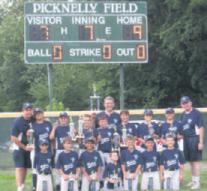

Over his lifetime, my father was a generous philanthropist to many Springfield non-profits including the Boys Club, the Springfield Museums, the Park Department, and the Spirit of Springfield. It has been my honor to follow in my father’s footsteps in supporting the organizations and economic development efforts to improve the quality of life of our great city.
 - Paul C. Picknelly
- Paul C. Picknelly




 BARNEY, WHO WOOD MUSEUM
LEFT: EVERETT HOSMER BARNEY. FRONTISPIECE ENGRAVING FROM WILLIAM FREDERICK ADAMS, EVERETT HOSMER BARNEY, HIS FAMILY CONNECTIONS, A RECORD OF HIS LIFE’S WORK (1912).
CENTER: PHOTO OF BARNEY MANSION WITH SHEEP GRAZING ON LAWN. COURTESY THE LYMAN & MERRIE WOOD MUSEUM OF SPRINGFIELD HISTORY, SPRINGFIELD MUSEUMS.
BARNEY, WHO WOOD MUSEUM
LEFT: EVERETT HOSMER BARNEY. FRONTISPIECE ENGRAVING FROM WILLIAM FREDERICK ADAMS, EVERETT HOSMER BARNEY, HIS FAMILY CONNECTIONS, A RECORD OF HIS LIFE’S WORK (1912).
CENTER: PHOTO OF BARNEY MANSION WITH SHEEP GRAZING ON LAWN. COURTESY THE LYMAN & MERRIE WOOD MUSEUM OF SPRINGFIELD HISTORY, SPRINGFIELD MUSEUMS.
Outdoor Power Equipment
Sales • Service • Parts
Outdoor Power Equipment
Outdoor Power Equipment
Residential and Commercial
Sales • Service • Parts
Lawn and Garden Equipment by:
Sales • Service • Parts



Residential and Commercial
• Toro • Scag • Echo • Generac Generators
Residential and Commercial




Toro • Scag • Echo • Generac Generators
Lawn and Garden Equipment by:
• Cub Cadet • Shindalwa • Jonsered • Billy
• Cub Cadet • Shindaiwa • Jonsered
• Billy Goat Leaf Blower
• Toro • Scag • Echo • Generac Generators
Goat Leaf Blower • BCS Rear Tine Tillers
Lawn and Garden Equipment by:





• BCS Rear Tine Tillers
• Cub Cadet • Shindaiwa • Jonsered
• Wheelhorse
• Wheelhorse • Lawn Boy • Briggs & Stratton
Toro • Scag • Echo • Generac Generators
• Toro • Scag • Echo • Generac Generators
• Lawn Boy • Briggs & Stratton
• Bill Goat Leaf Blower• BCS Rear Tine Tillers
• Tecumseh • Kohler • Honda
• Tecumseh • Kohler • Honda
• Wheelhorse • Lawn Boy • Briggs & Stratton
• Tecumseh
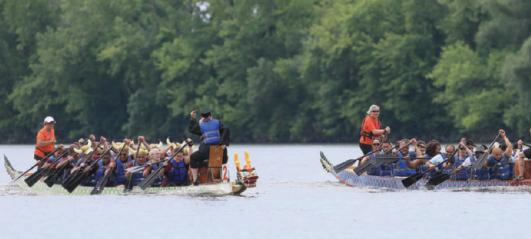
• Cub Cadet • Shindaiwa • Jonsered
• Kohler
• Kawasaki • Subaru
• Kawasaki • Subaru
• Honda
• Cub Cadet • Shindalwa • Jonsered • Billy
• Kawasaki • Subaru
• Billy Goat Leaf Blower


Family Owned and Operated
Goat Leaf Blower • BCS Rear Tine Tillers

• BCS Rear Tine Tillers

• Wheelhorse
413-253-7358
413-253-7358
• Wheelhorse • Lawn Boy • Briggs & Stratton
41 S.Whitney Street boydenandperrron.com Amherst, MA 01002
41 S. Whitney Street Boydenandperron.com Amherst, MA 01002
• Lawn Boy • Briggs & Stratton
• Tecumseh • Kohler • Honda
• Tecumseh • Kohler • Honda
• Kawasaki • Subaru
• Kawasaki • Subaru
Family Owned and Operated
41 S.Whitney Street boydenandperrron.com Amherst, MA 01002
413-253-7358
Mercy Medical Center celebrates the City of Springfield for over 200 years of providing picturesque parks for residents to enjoy. Thank you for your commitment to our community!

The City of Springfield is forever grateful to Everett H. Barney for establishing a trust for the care and ornamentation of his 178-acre estate for the enjoyment of the residents of Springfield and regional visitors. His son George made the request to establish this trust to his father when he was stricken with illness, and soon after passed at the age of 26. By the turn of the century, both the elaborate mansion and the Carriage House were among Springfield’s most admired architectural gems.
In addition to his other successful endeavors, Everett Barney was an avid horticulturalist. The grounds surrounding his estate are laid out with artistic skill and adorned with many rare plants that he imported from Europe, Egypt, China, Japan and India.







Today, the Carriage House is one of two lasting structures at the Barney Estate as Barney’s iconic stone warming house remains standing overlooking Barney Pond. The Carriage House is a captivating meeting spot for weddings, conferences, parties and more. Views from the Carriage House show the beauty of Forest Park, the Connecticut River, and the Springfield skyline. Each day park patrons enjoy the exquisite grounds of his former estate and the tranquil setting he left for all to enjoy.

The Springfield Park Department has worked collaboratively with Barney Trustees over the past 30 years in the meticulous renovation of his estate. The Trustees include Attorney Stephen Reilly, Attorney Corrine Rock, and Paul Sears. Their dedicated stewardship of the Barney Trust has ensured the preservation of his estate for future generations.



W hen I was Mayor of Springfield, the city was designated as a ‘Tree City USA’ from the National Arbor Day Foundation, and we see the importance of that investment across our city –especially in our parks. The City of Springfield has green spaces tucked into every neighborhood so that folks from all corners of the city can reap their benefits. The real gem though is Forest Park which was designed by the prestigious architect Frederick Law-Olmstead. Even today, 139 years after its founding, Forest Park is filled with activity, provides recreational spaces for people of all ages, incubates habitats for wildlife, improves the quality of the air that we breathe, and allows all who enter its gates to enjoy and connect with nature.
Springfield is known as ‘The City of Homes’ and ‘The City of Firsts’, but another name our great city can be called is ‘The City of Parks’.

All of our neighborhood parks provide everlasting memories for our residents and their families, especially Emerson Wight and our historic Forest Park – 735 acres of beautiful active and passive recreation, which are both near and dear to my heart when I was growing up – they were my Riviera.


My Administration, thanks to the leadership from Patrick Sullivan, Executive Director of Parks, Buildings and Recreational Management, continues to support our beautiful parks system and enhance the quality of life for our residents and businesses by investing over $93 million worth of improvements in our Parks and Open Spaces, and $6 million into Forestry Upgrades and Tree Planting Programs. Green ‘Oasis’ spaces are so vitally important, especially in urban centers.

The City of Springfield is proud of our award-winning urban parks system, one of the greatest in the Nation. My Administration will continue to enhance and support our parks and open spaces so that their lasting legacy in our community can be shared and enjoyed by all and for future generations.

Respectfully,


 Mayor Domenic J. Sarno
Mayor Domenic J. Sarno
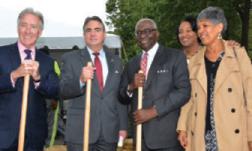
 A RIBBON CUTTING CEREMONY WAS HELD AT THE “ DREAM COURT” AT ADAMS PARK FUNDED BY NANCY LIEBERMAN CHARITIES IN PARTNERSHIP WITH SPORT COURT, THE NAISMITH MEMORIAL BASKETBALL HALL OF FAME, AND THE CITY OF SPRINGFIELD. SEPT. 5, 2018. PHOTO BY DON TREEGER / THE REPUBLICAN
CHILDREN ON PLAY EQUIPMENT AT EMERSON WIGHT PARK, 2012. PHOTO BY DAVE ROBACK/ THE REPUBLICAN
A RIBBON CUTTING CEREMONY WAS HELD AT THE “ DREAM COURT” AT ADAMS PARK FUNDED BY NANCY LIEBERMAN CHARITIES IN PARTNERSHIP WITH SPORT COURT, THE NAISMITH MEMORIAL BASKETBALL HALL OF FAME, AND THE CITY OF SPRINGFIELD. SEPT. 5, 2018. PHOTO BY DON TREEGER / THE REPUBLICAN
CHILDREN ON PLAY EQUIPMENT AT EMERSON WIGHT PARK, 2012. PHOTO BY DAVE ROBACK/ THE REPUBLICAN







 ABOVE: MARIA ULLOA, LEFT AND THREE OF HER DAUGHTERS, CATHY ULLOA, MARIA ULLOA-HANCOCK AND ANITA ULLOA-FAZIO POSE FOR A PHOTO PRIOR TO THE START OF THE OPENING CEREMONY WAS WHICH HELD FOR THE JAIME ULLOA PARK IN THE NORTH END NEIGHBORHOOD OF SPRINGFIELD, JULY 14, 2018.
PHOTO BY MARK M. MURRAY/ THE REPUBLICAN
RIGHT: CHIEF RODNEY RANDY JOSEPH, FROM THE PLYMOUTH WAMPANOAG TRIBE, SPOKE AT THE REOPENING AND RE-DEDICATION CEREMONY FOR KING PHILIP’S STOCKADE, MAY 19, 2005.
ABOVE: MARIA ULLOA, LEFT AND THREE OF HER DAUGHTERS, CATHY ULLOA, MARIA ULLOA-HANCOCK AND ANITA ULLOA-FAZIO POSE FOR A PHOTO PRIOR TO THE START OF THE OPENING CEREMONY WAS WHICH HELD FOR THE JAIME ULLOA PARK IN THE NORTH END NEIGHBORHOOD OF SPRINGFIELD, JULY 14, 2018.
PHOTO BY MARK M. MURRAY/ THE REPUBLICAN
RIGHT: CHIEF RODNEY RANDY JOSEPH, FROM THE PLYMOUTH WAMPANOAG TRIBE, SPOKE AT THE REOPENING AND RE-DEDICATION CEREMONY FOR KING PHILIP’S STOCKADE, MAY 19, 2005.



YOUR DAY. YOUR WAY. WE COME TO YOU.
Have the Log Cabin experience brought to you. With Log Rolling, you can enjoy the services of the region’s most impeccable wedding professionals no matter where you decide to get married. We offer customizable menus, chef-attended stations, themed buffets and experienced waitstaff. We also provide the liquor license. You’ve found the perfect spot. Let us help you create the perfect day.
For more information call 413-533-5077 or visit www.logrollingcatering.com





ABOVE: LARK GREY DIMOND-CATES WORKING ON THE CLAY BAS RELIEF PRIOR TO CASTING IN BRONZE. PHOTO COURTESY OF DIMONDCATES STUDIOS.






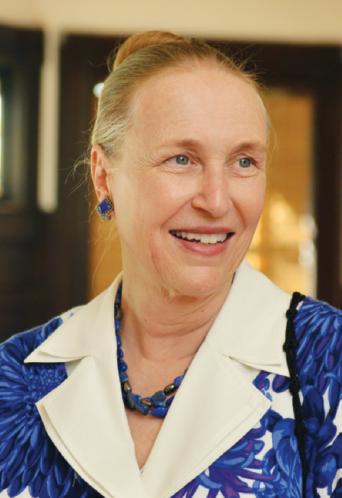




The Friends of Springfield Parks has commissioned an 8’ ft. x 6’ ft. bas relief bronze sculpture that depicts a young Dr. Seuss and his father, longtime Park Superintendent Theodor R. Geisel in Forest Park with characters and images from the park during their time. The backside engraving tells the story of Superintendent Geisel and how his son Theodor Seuss Geisel was inspired by his experiences and interactions at Forest Park and the Forest



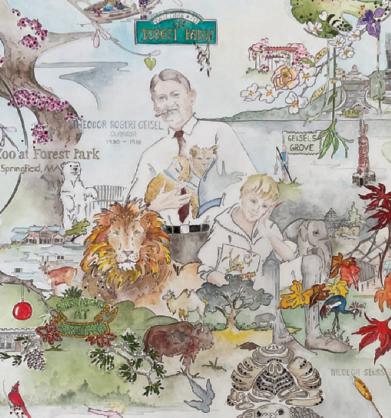

Park Zoo. Creation and installation of the sculpture is the first phase in the development of the Dr. Seuss experience at the Forest Park Horticulture Center. Theodor S. Geisel’s stepdaughter, Lark Grey Dimond-Cates is the artist who sculpted the bas relief. She is the sculptor of all of the bronze’s in the national acclaimed Dr. Seuss Memorial Sculpture park at the Springfield Museums.
 RIGHT: LARK GREY DIMOND-CATES.
PHOTO BY DON TREEGER/ THE REPUBLICAN.
RIGHT: LARK GREY DIMOND-CATES.
PHOTO BY DON TREEGER/ THE REPUBLICAN.

 BY PETER GOONAN
BY PETER GOONAN
Morethan 200,000 students have gone through the ECOS program. City and school officials and many supporters gathered at the Clifford A. Phaneuf Environmental Center at Forest Park on May 6, 2016 to praise a completed $4 million renovation project that transformed the rustic log building into a state-of-theart facility for learning.
Mayor Domenic J. Sarno said the city has “developed a first-class environmental center for our students.”
The building houses the Environmental Center for Our Schools (ECOS) program that began in 1970 in Springfield and is named after the late Clifford A. Phaneuf Sr., who was instrumental in creating the ECOS program and was its director for 17 years.
“Cliff Phaneuf would be proud that this program is still strong and carrying out his mission,” Superintendent of Schools Daniel Warwick said. “ECOS has played a significant part in teaching the importance of and understanding of our urban environment.”
The improvements include increased classroom space, additional outdoor classroom space, restrooms that comply with the Americans with Disabilities Act, conversion to natural gas, energy efficiencies for heating, cooling and lighting, life safety equipment, a kitchen facility, removal of the septic system, landscape enhancements and improved access to Porter Lake.
“Everyone always speaks of their recollections of attend-
ing ECOS as a child, and the school district recognizes its responsibility in developing an appreciation for the school in our environment,” Warwick said.




Wayne Phaneuf, who is executive editor of The Republican and the son of Clifford Phaneuf, spoke on behalf of the family, praising the completed project. He thanked many of those gathered, including Mayor Sarno and long-time teacher Burt Freedman, for their concerted efforts to pursue and complete the renovations project.
“This is a very special moment for all of us,” Phaneuf said, noting that family members in attendance spanned three generations. Others who gathered for the open house included Christopher Collins, vice chairman of the School Committee; Brian Santaniello, chairman of the Park Commission; Patrick J. Sullivan, director of parks, buildings
and recreation management; Ron St. Amand, director of science; U.S. Rep. Richard E. Neal, D-Springfield; and Burt Freedman, a longtime teacher in the ECOS program who was described as a dogged advocate for the renovations. Patrick Sullivan had attended the ECOS program as a student.
Collins was among officials who praised Clifford Phaneuf as an “amazing man” who was “the backbone” of bringing a strong environmental education program to Springfield.



Sarno praised Freedman for helping to keep the pressure on the city to make sure the needed renovations occurred.
Phyllis Gotta, a now-retired long term substitute teacher in the ECOS program, who attended the open house, said the center was her favorite place in which to teach and to see the children experience nature and learn.
The success of the Forestry Division and the existence of Springfield’s significant tree resource is the direct result of the care and professionalism exhibited by its City foresters over the last 125 years. The city has had a total of ten individuals lead the Forestry Division as City Forester.
The Forestry Division was established by Mayor Henry S. Dickinson in January of 1898. William F. Gale was appointed as the first City Forester in February of that year. In August of 1898, the Department of Forestry removed the “Queen Elm” located on Elm Street at the Elm Street School House. Gale’s efforts would set the precedent for the professional management of Springfield’s trees over a century later.
The longest serving City Forester was L. Fletcher Prouty who served for 44 years from 1918 until 1962. Prouty began his career as an assistant to City Forester J. Alden Davis in 1913 after
BY ALEXANDER R. SHERMAN, CITY FORESTERattending the Massachusetts Agricultural College. Prouty led the Division through a great period of development within the city and is responsible for much of our mature tree canopy today.
Henry A. Mathieu served as City Forester for 21 years from 1968 to 1989. Henry continued the legacy of the Springfield municipal nursery and designed a bare root tree digging device he called “the thing,” and is credited with planting thousands of trees across the city.
The second longest serving City Forester is Edward P. Casey who served for 26 years from 1992 to 2018.
Casey brought the Forestry Division into the 21st Century by employing the latest research-based Urban Forestry practices. Casey also guided the division through one of the City’s worst natural disasters in 2011 when a Tornado caused significant tree damage. He led the Division’s efforts from initial cleanup through to reforestation and
ABOVE: REGREEN SPRINGFIELD, A NON-PROFIT FORMED FOLLOWING THE 2011 TORNADO CUT THROUGH SPRINGFIELD TO HELP REFOREST CITY NEIGHBORHOODS, LE AD A TREE PLANTING ON ROCHELLE AND ANNAWON STS. IN THE CITY ON APRIL 10, 2014. WITH HELP FROM THE CITY FORESTRY DEPARTMENT AND SPONSORSHIP FROM BERKSHIRE BANK, THE EVENT DREW VOLUNTEERS FROM AREA BUSINESSES AND SCHOOLS. FROM LEFT, DAVE BLONIARZ, PRESIDENT OF REGREEN SPRINGFIELD, DAN STROM, REGREEN SPRINGFIELD PROJECT DIRECTOR, ETHAN PAGE, A CITY FORESTRY DEPARTMENT INTERN AND STUDENT AT THE UNIVERSITY OF MASSACHUSETTS STOCKBRIDGE SCHOOL OF AGRICULTURE AND SPRINGFIELD CITY FORESTER ED CASEY. PHOTO BY MICHAEL S. GORDON/ THE REPUBLICAN
TOP: SPRINGFIELD CITY FORESTER ALEX SHERMAN TENDING TO SEEDLINGS IN THE FORESTRY DEPARTMENT’S GREENHOUSE IN FOREST PARK, APRIL 10, 2023. PHOTO BY DON TREEGER / THE REPUBLICAN

the impacts of his leadership are evident in the re-vitalized tree canopy.
The state of Springfield’s urban forest is reliant on each
City Forester charged with the care of its trees building upon what his predecessor has achieved. The City of Springfield has consistently
employed professional urban forest managers to care for its city’s trees.










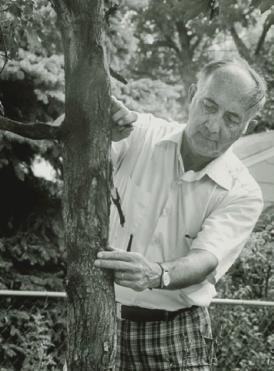 BY SPRINGFIELD PARK DEPT.
BY SPRINGFIELD PARK DEPT.


Springfield has long been on the cutting edge of climate change and disaster preparedness. Since enduring two federally declared natural disasters in 2011, the city has initiated several programs related to community resiliency. Springfield’s “Climate Action and Resilience Plan” developed in 2017 prioritized managing the urban forest as one of the six strategies of the plan. Among the many aspects of the plan, one goal is to achieve 100% street tree stocking levels by planting an additional 55,000 trees on public prop -





GZA praises the City of Springfield’s Department of Parks, Buildings, and Recreation Management for its stewardship of hundreds of acres of City-owned parkland. Our team of engineers, landscape architects, and scientists is honored to have worked with the City on over 50 park projects including the construction of athletic fields, playgrounds, downtown pedestrian plazas, and trails, as well as creating educational landscapes, natural open space areas, and habitat restorations.
erty by 2060. Among the means to achieve this goal will be a detailed vulnerability and risk assessment of Springfield’s urban forest, increased capacity of municipal nursery operations, and the re-design and the retrofit of Forestry Division Operations Center and Arboricultural Learning Center. Mayor Domenic Sarno stated, “This project will transform Springfield’s urban landscape and ensure future generations that Springfield’s climate infrastructure will be protected by planting more trees.”
















Park was named after Stanhope E. Blunt by the Park Commissioners in 1927. He was a graduate of West Point who served this nation in the military from 1872 to 1912, including holding the post of Commandant of the Springfield Armory from 1907-1912. After his retirement from the military, Blunt served eleven years as chairman of the Springfield Park Commission. He also served as president of the Springfield Hospital. Two hundred and seventeen acres of the park was developed from 1931-1940.



Blunt










 BY JOSEPH CARVALHO III
BY JOSEPH CARVALHO III

A$2.5 Million project which began in 2021 and completed in 2022 addressed the Watershops Pond dam’s “high hazard” designation and reduced the risk of flooding in the city’s South End. The required draw down of the Lake Massasoit during the repairs enabled the city to remove “noxious items” such as automobiles, and tornado-related debris from homes and buildings adjacent to the lake. The project replaced two sluice gates, the crest gate, and the upstream left training wall; permanently

closed two penstock openings at the right abutment of the dam, replaced the antiquated electrical service, and included vegetation and tree removal.
The Watershops Pond Dam is a concrete and masonry gravity dam believed to have been constructed around 1857. The city took ownership of Watershops Pond and the dam from the federal government in 1969 with the stipulation that the pond be used and maintained as public parkland.


Searching for High Quality Building Maintenance Chemicals, Supplies and Machines, Without Compromising Excellent Customer Service? Look No Further than Kellco Products, Inc. Kellco Not Only Offers Premiere Janitorial Supplies, but Also the Finest Salespeople and Customer Service Support Teams in the Business.

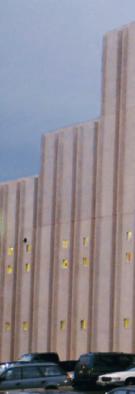


A Small, Family-Owned New England Business Built on Integrity and Value, Kellco Products, Inc. has Excelled in the Distribution of Innovative Chemicals and Equipment for Building Maintenance for Over 50 Years. John Kelly, Jr. Started Kellco Products in his Basement in 1959, and Watched it Grow Over the Years into a Major Force in the Maintenance Supplies & Equipment Industry. Today, Kellco Products is Still Owned and Operated by the Kelly Family, with John Kelly III as President. Although Times have Changed and the Company has Grown Significantly, the Kelly’s have Worked Hard to Maintain the Small, Family Business Feeling at Kellco Products.
Congratulations to the Springfield Parks Department for publishing the book,


and for two centuries of preserving our region’s open spaces to be enjoyed by friends, neighbors, and future generations.


According to Keith O’Connor in his History of Bright Nights, “It all started with a brochure from a company designing and manufacturing holiday lighting displays (Carpenter Decorating Company of North Carolina) that came across the desk of Park Director Patrick Sullivan back in February 1995.” Sullivan reached out to Judith A. Matt, president of the Spirit of Springfield to oversee the creation of a major lighting display at Forest Park. The initial display had over 300,000 lights powered by 598,845 watts and Bright Nights was born.
 BRIGHT NIGHTS LIGHTING DISPLAY ENTRANCE TO “ SEUSSLAND,” DEC. 24, 2021.
PHOTO BY JOSEPH CARVALHO III.
BRIGHT NIGHTS LIGHTING DISPLAY ENTRANCE TO “ SEUSSLAND,” DEC. 24, 2021.
PHOTO BY JOSEPH CARVALHO III.